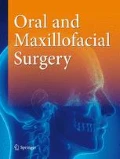Zusammenfassung
Josef Beuys (1921–1986), einer der bedeutendsten deutschen Künstler am Ende des 20. Jahrhunderts, hat sich – was kaum bekannt ist – in seinem Werk intensiv mit dem Schädel unter verschiedenen Aspekten auseinandergesetzt. Zähne, besonders Molaren, sowie Geweih und Hörner als organoid ausdifferenzierte Bildungen von Hartsubstanzen des Viszerokraniums brachte Beuys sehr bildhaft unmittelbar mit dem strömenden Kreislaufprinzip in Verbindung. Darüber hinaus hat Josef Beuys, besonders in seinem zeichnerischen Frühwerk, den Unterkiefer durch einen Schlitten ersetzt. Der Künstler erfindet hierbei interessante, sehr eigenwillige Konstruktionen, die besonders die Gestaltung des Kiefergelenks und der kranio-vertebralen Übergangszone betreffen. Spezielle Konstruktionsmerkmale vom Schlitten zeigen formal eine auffallende Analogie zum aufsteigenden Unterkieferast. Die Basis des Corpus mandibulare wird zur Gleitfläche, zu Schlittenkufen verwandt. Durch die Verwendung eines Schlittens anstelle des Unterkiefers werden Fragen der Bewegung sowie der Einwirkung von Kräften auf den Schädel und auf die Erde initiiert. Das zunächst nicht kategorisierbare Anatomieverständnis des Künstlers, das eine naturwissenschaftlich ausgerichtete Medizin weit überwindet, ist von seinem Denken, seinem Energieplan und von seiner Metamorphosenlehre geprägt. Josef Beuys verweist mit seinem Schädel-Urschlittenthema auf transitorische Bewußtseinsschichten zwischen Tod und Leben. „Kopf“ und „Schlitten“ sind bei Josef Beuys schon sehr früh Formen plastischen Denkens.
Summary
Few people are aware that Joseph Beuys (1921–1986), one of the most important artists at the end of the twentieth century, studied various aspects of the human skull. Beuys used teeth (especially molars), antlers, and horns as organically differentiated formations of solid substances of the viscerocranium, associating them in a very visual way with the “streaming circulation” principle. In addition, in his early drawings, in particular, Beuys replaced the lower jaw with a sledge. The artist has thus created interesting and strange constructions concerned with the structure of the jaw and the craniovertebral transition. Certain characteristic structural elements of sledges show a remarkable formal analogy to the ramus of mandible. The base of the body of mandible becomes a sliding surface, the iron runners of the sledge. Replacing the lower jaw with a sledge raises questions concerning movement and the effect of energy on the skull and on the earth. The artist’s understanding of anatomy goes for beyond than that of normal medicine. It is formed by his thinking, his energy plan, and by his own theory of metamorphosis. With his skull and Urschlitten motif, Beuys makes us aware of the transitory layers of consciousness between life and death. “Head” and “sledge” are early forms of sculptural thinking in the work of Joseph Beuys.
Author information
Authors and Affiliations
Rights and permissions
About this article
Cite this article
Schulz, H. Schädel und Unterkiefer. Zum „Urschlitten“ von Joseph Beuys . Mund Kiefer GesichtsChir 3 (Suppl 1), S7–S11 (1999). https://doi.org/10.1007/PL00014521
Issue Date:
DOI: https://doi.org/10.1007/PL00014521

